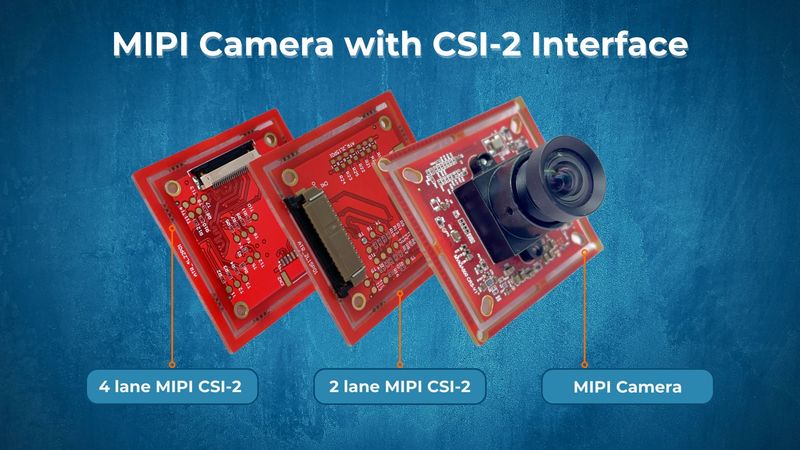Enhancing OCR Precision with MIPI Camera Interfaces
Optical Character Recognition (OCR) technology is essential in today's digital age for a number of industries, including digital archiving, automated data entry, smart device interface, and document scanning. The quality of the input images that are taken by cameras has a significant impact on the accuracy and performance of OCR systems. Camera interfaces that use MIPI (Mobile Industry Processor Interface) have become a standard, greatly improving OCR accuracy across a range of applications.
Understanding MIPI Camera Interfaces
MIPI camera interfaces are specifically designed to meet the stringent power, bandwidth, and interface requirements of mobile and embedded applications. They provide a standardized method for connecting cameras to processors in devices such as smartphones, tablets, IoT devices, and industrial equipment. This standardization ensures compatibility and interoperability across different hardware platforms, making MIPI interfaces widely adopted in the industry.
Advantages of MIPI Cameras for OCR
High Bandwidth Capability: MIPI interfaces support high-speed data transmission between the camera sensor and the processing unit. This high bandwidth ensures that detailed images required for accurate OCR processing can be captured and transferred efficiently.
Low Power Consumption: Efficiency is key in mobile and embedded systems. MIPI interfaces are designed to minimize power consumption, making them ideal for battery-powered devices that require continuous OCR functionality without draining the battery quickly.
Compact and Scalable Design: MIPI standards allow for compact camera module designs, facilitating integration into small form factor devices without compromising on image quality. Moreover, these interfaces support scalability, enabling the use of cameras with varying resolutions depending on application requirements.
Applications of MIPI Cameras in OCR
Document Scanning and Digital Archiving
MIPI cameras enable smartphones and portable scanners to capture high-resolution images of documents, enhancing OCR accuracy for converting physical documents into searchable digital formats.
Smart Retail and Inventory Management
In retail environments, MIPI cameras integrated into inventory management systems can swiftly capture product information from labels and barcodes, facilitating efficient stock management and real-time updates.
Automated Data Entry and Authentication
MIPI-enabled cameras in devices like tablets and point-of-sale terminals streamline data entry processes by accurately scanning and interpreting text from IDs, invoices, and forms, improving transaction speed and accuracy.
Future Trends and Innovations
As OCR technology continues to evolve, MIPI camera interfaces are expected to play a pivotal role in advancing capabilities such as real-time language translation, enhanced text recognition in complex environments, and seamless integration with AI-driven applications for predictive analytics.
Conclusion: Empowering OCR with MIPI Camera Interfaces
MIPI camera interfaces have revolutionized OCR technology by providing high-bandwidth, low-power solutions that are crucial for achieving precise and efficient text recognition. As industries increasingly rely on digital transformation and automation, the role of MIPI cameras in enhancing OCR precision will only grow.
By focusing on the integration of MIPI camera interfaces, organizations can ensure their OCR systems not only meet current demands but also anticipate future technological advancements, thereby staying ahead in a competitive landscape driven by digitalization and automation.
โฆษณา
- ดาวน์โหลดแอปพลิเคชัน
- © 2025 Blockdit


